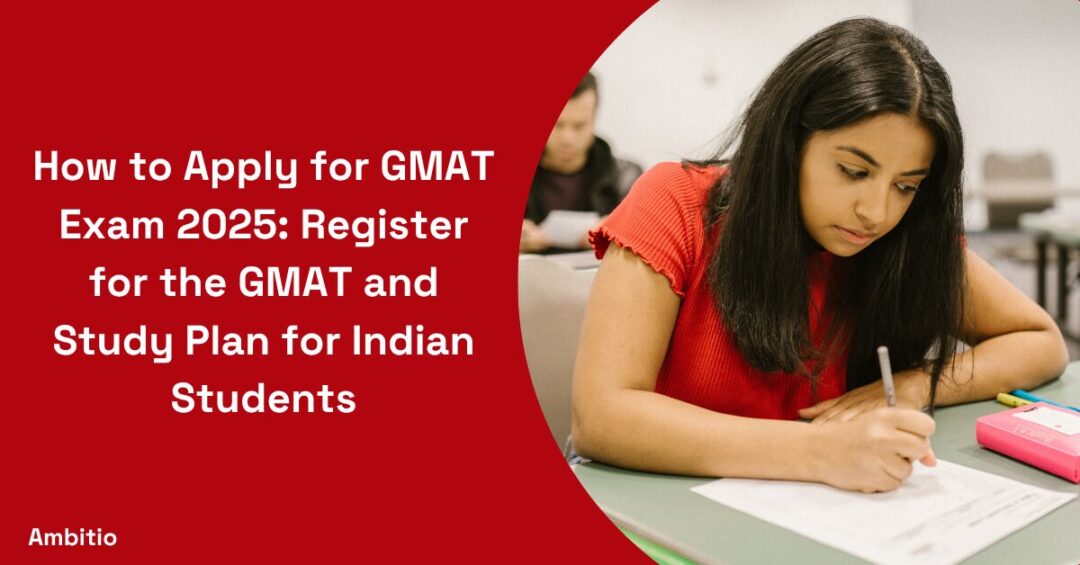11 December 2024
8 minutes read
What Is the Purpose Of (Graduate Management Admission Test) GMAT Exam

Key Takeaways
- The GMAT is essential for proving your readiness for top business schools.
- Understand the four main sections to focus your preparation effectively.
- Choose the right exam based on your program’s requirements and your strengths.
- Use practical strategies like simulating test conditions and maintaining an error log for optimal performance.
If you are one of those seeking entrance into a reputed business school and seeking advice on how to ensure your application is exceptional then you are in the right place. Cracking the GMAT is a tough process, but often the aspiring MBA students struggle even more to find ways to prove that they are ready for graduate business programs. The Graduate Management Admission Test, GMAT, developed by the Graduate Management Admission Council is a significant landmark in this path.
The format of GMAT exam is structured to test if you can master the analytical writing, integrated reasoning besides testing your ability to reason quantitatively and qualitative, both of which are critical skills that would be useful in business school. This exam may be intimidating since one is expected to post a high score especially if preparing to sit for it. In this blog, you will be able to discover how taking the test can benefit your options for receiving graduate management education and some strategies to achieve success.
What Is the GMAT Exam?
The GMAT exam, or Graduate Management Admission Test, is a standardized test used by business schools worldwide to measure a test taker’s readiness for graduate business programs. Designed to test your command of various skills, the GMAT consists of four main sections: Analytical Writing Assessment, Integrated Reasoning, Quantitative, and Verbal. This entrance exam is crucial for those aiming to register for the GMAT and pursue an MBA in the USA and other foreign countries.
The GMAT is also known for its computer-adaptive format, which adjusts the difficulty of questions based on your performance. Test centres around the world administer the GMAT, and you can take the exam up to five times within a year. The score on the GMAT is valid for five years, allowing you to use the GMAT score to apply to multiple programs.
With the new GMAT Focus edition, test takers can expect an updated format designed to test their abilities more effectively. Preparing to beat the GMAT exam involves understanding the format of the GMAT and the specific sections of the exam, ensuring you achieve your target GMAT score.
Why the GMAT Exam is Important For Business Schools?
The GMAT exam is a crucial entrance exam for those aiming to pursue an MBA or other graduate business programs. It is designed to test a wide range of skills, including analytical writing, integrated reasoning, quantitative reasoning, and verbal skills. Business schools use the GMAT to evaluate candidates’ readiness for the rigours of graduate management education.
Here are four key reasons why the GMAT exam is important for business schools:
Assessment of Essential Skills
The GMAT is designed to test your command of skills crucial for success in business school, such as critical reasoning and quantitative analysis. The GMAT quant section, for instance, helps schools gauge your numerical and problem-solving abilities. These skills are essential in business environments where strategic thinking and data analysis play a significant role in decision-making.
Standardized Evaluation
As a computer-adaptive test, the GMAT provides a standardized measure of all test takers’ abilities, ensuring a fair comparison across a diverse applicant pool. This standardization is vital for business schools when evaluating candidates from different educational backgrounds. The GMAT is also unique because it adjusts the difficulty of questions in real-time based on your answers, providing a precise assessment of your skill level.
Predictive Validity
The GMAT total score is often used to predict a candidate’s potential for academic success in a graduate management program. Studies have shown that higher GMAT scores correlate with better performance in MBA programs. This predictive validity means that a strong GMAT score helps admissions committees identify candidates who are likely to excel in their coursework and contribute positively to the academic environment.
Global Recognition
The GMAT is accepted by over 7,000 programs worldwide, making it a widely recognized and respected credential. Registering for the GMAT and achieving a strong score can open doors to top business schools around the globe, enhancing your career prospects. The exam’s global acceptance means that no matter where you choose to study, a solid GMAT score can significantly bolster your application.
How To Register For the GMAT Exam?

The GMAT is a standardized test designed to test your command of various skills, and it is used by business schools around the world to evaluate applicants. Here’s a step-by-step guide to help you register for the GMAT, ensuring you’re ready to achieve your target GMAT score.
Here’s a Step-by-Step Process:
Create an Account on the Official GMAT Website
Start by visiting the official GMAT website. Here, you’ll need to create an account, which will allow you to register for the GMAT, select test dates, and access your scores. This account is your gateway to managing all aspects of your GMAT journey.
Choose Test Date and Location
After creating your account, you can search for available test centers around the world and select a convenient location. The GMAT is conducted throughout the year, so choose a date that gives you ample time to prepare for the exam. Remember, it’s crucial to book your slot early to secure your preferred test date.
Pay the Exam Fee
Once you’ve selected your test date and location, you will need to pay the exam fee to complete your registration. The fee can vary depending on your location, and you can pay using a credit card or other accepted payment methods. Keep an eye on any additional costs, such as rescheduling fees if you need to change your test date.
Prepare for the Exam
With your registration complete, it’s time to focus on studying for the GMAT. Utilize official GMAT prep materials and consider enrolling in a GMAT preparation course. Understanding the format of the GMAT and familiarizing yourself with each section of the exam, including the GMAT quant section and GMAT verbal section, will help you perform your best on test day.
Confirm Registration and Test Day Requirements
As your test date approaches, ensure you have all necessary documents and understand the test day procedures. Check the official GMAT website for any updates or changes, and make sure to review the test center’s rules and regulations. Arrive at the test center early, with a valid ID and confirmation email, ready to take the exam.
What is the Difference Between the GMAT And the GRE?

When applying to graduate business programs, students often choose between the GMAT and GRE. Both tests measure a test taker’s readiness for graduate-level education, but they differ in structure, content, and acceptance.
Purpose and Focus
The GMAT is designed for business school and MBA applicants, focusing on skills crucial for graduate management education. The GRE is more versatile, used for a wide range of graduate programs, including business schools.
Test Structure
The GMAT has four sections: Analytical Writing Assessment, Integrated Reasoning, Quantitative, and Verbal. The GRE includes Verbal, Quantitative, and Analytical Writing sections, plus an unscored experimental section. The GMAT is computer-adaptive in real-time, while the GRE adapts between sections.
Quantitative and Verbal Emphasis
The GMAT’s quant section focuses on data sufficiency questions, while the GRE includes straightforward math problems and allows a calculator. In the verbal section, the GMAT emphasizes critical reasoning and sentence correction, whereas the GRE includes more vocabulary-based questions.
Scoring
The GMAT total exam score ranges from 200 to 800, combining Quantitative and Verbal sections, with separate scores for Analytical Writing and Integrated Reasoning. The GRE scores for the Verbal and Quantitative sections were from 130 to 170 and for Analytical Writing from 0 to 6. Check if your target business schools prefer one test over the other.
5 Expert Tips To Prepare For The GMAT

Preparing for the GMAT can be a terrifying task, but with the right strategies for GMAT exam, you can improve your performance significantly. Here are five uncommon and practical tips to help you prepare effectively for the GMAT.
Simulate Real Test Conditions
Instead of just practicing questions individually, take full-length practice tests that mimic real test conditions. This means timing yourself strictly, taking breaks exactly as you would during the actual test, and working in a quiet environment similar to a test center. This practice helps you build endurance and get accustomed to the pressure of the exam.
Master the Art of Skipping
Learn to quickly identify questions that are too time-consuming and skip them strategically. This skill is crucial because the GMAT is a timed test, and managing your time efficiently can significantly impact your total score. Practice by timing yourself on each question and deciding in advance how much time you’re willing to spend on different types of questions.
Use Error Logs Effectively
Maintain a detailed error log to track the mistakes you make during practice. Go beyond just noting the wrong answers—analyze why you got them wrong, what the correct approach should have been, and how you can avoid similar mistakes in the future. Reviewing and understanding your errors can be one of the most effective ways to improve.
Incorporate Active Learning Techniques
Passive reading and memorization are less effective than active learning strategies. Engage with the material by teaching concepts back to yourself or others, creating flashcards, or summarizing what you’ve learned in your own words. Active learning helps reinforce your understanding and retention of the material.
Focus on Quality Over Quantity
Instead of trying to solve as many questions as possible, focus on understanding the logic and concepts behind each question type to get maximum GMAT score. Spend time dissecting difficult problems and understanding the rationale behind the correct answers. This deep understanding will be more beneficial than simply practicing a high volume of questions without grasping the underlying concepts.
Conclusion
At last, understanding the purpose of the GMAT, knowing how it differs from other entrance exams like the GRE, and having a strategic approach to your preparation can greatly enhance your chances of success. By following the expert tips and guidance provided, you can navigate the complexities of the GMAT with confidence and precision.
Remember, consistency is the key. Allocate specific times each week to study, take practice tests, and review your error log. This steady approach will help reinforce your learning and keep you on track as you prepare for the exam. Stay disciplined, stay focused, and you’ll be well on your way to achieving your target GMAT score.
Master the GMAT and pave your way to MBA excellence with Ambitio. Our platform offers in-depth study materials, practice questions, and tailored feedback, focusing on the areas you need to strengthen to boost your score and secure your place at a top business school.
FAQs
What is a good GMAT score?
How many times can I take the GMAT?
What is the GMAT Quantitative section like?
The GMAT Quantitative section consists of 31 multiple choice questions to be completed in 62 minutes. It tests your knowledge of arithmetic, algebra, geometry, and data analysis. The questions are designed to be challenging and may require creative thinking to solve.
What is the GMAT Verbal section like?
The GMAT Verbal section consists of 36 multiple choice questions to be completed in 65 minutes. It tests your ability to read and comprehend written material, evaluate arguments, and correct written material to conform to standard written English. The three question types are Reading Comprehension, Critical Reasoning, and Sentence Correction.
What is the GMAT Focus exam?
The GMAT Focus exam is a shorter version of the GMAT that was introduced in 2024. It consists of three 45-minute sections: Quantitative Reasoning, Verbal Reasoning, and Data Insights. The Data Insights section tests your ability to interpret data from various sources like tables, graphs, and passages. The total exam time is 2 hours and 15 minutes.
Can I use a calculator on the GMAT?
Yes, you are allowed to use a calculator on the GMAT Quantitative section. However, you cannot use a calculator on the Verbal section. It is recommended to use a calculator that is approved by the Graduate Management Admission Council (GMAC), which is the organization that administers the GMAT.

You can study at top universities worldwide!
Get expert tips and tricks to get into top universities with a free expert session.
Book Your Free 30-Minute Session Now! Book a call now




























